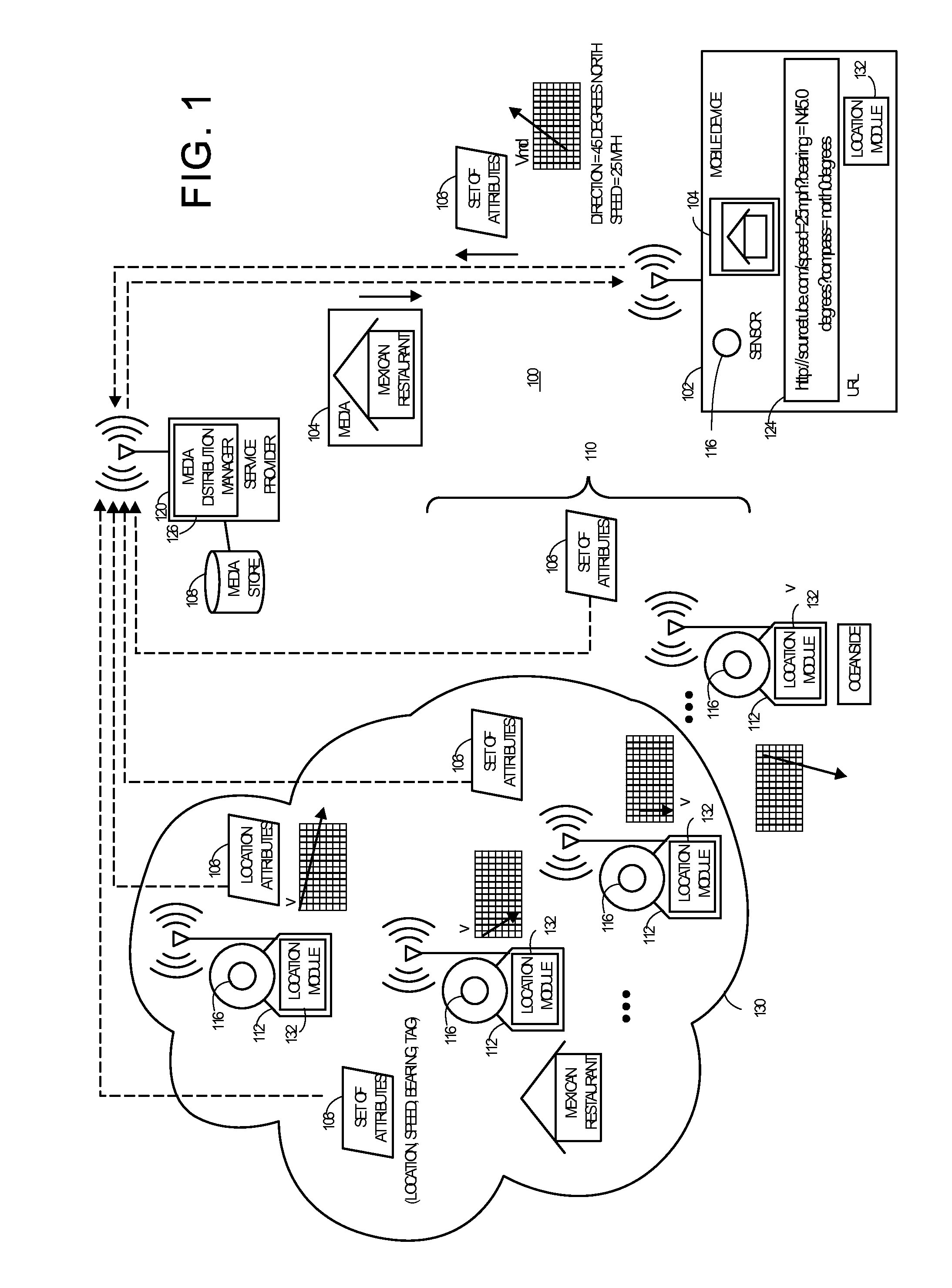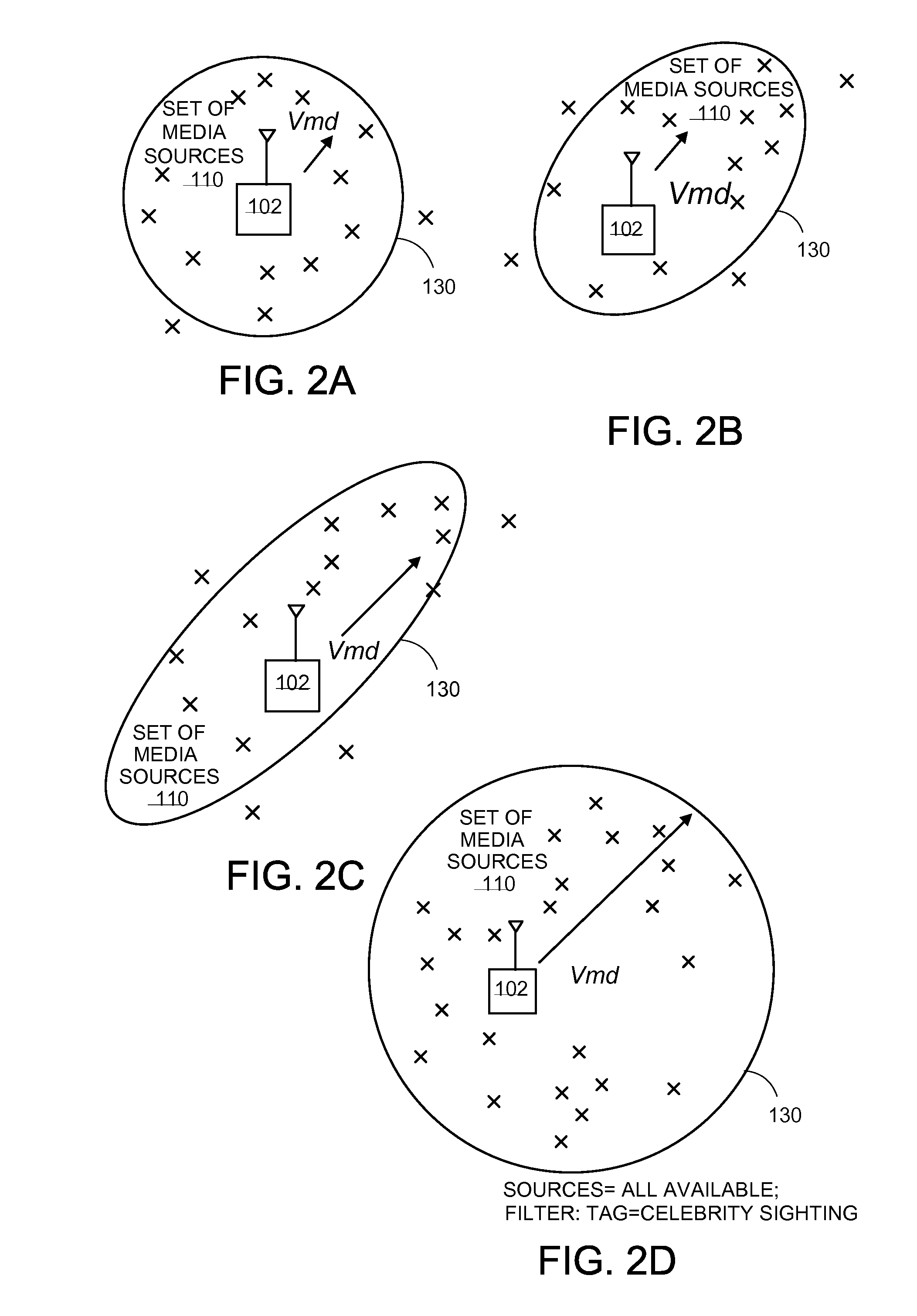Systems and methods for generating a selective distribution of media content feeds
a technology of media content and system, applied in the direction of broadcasting with distribution, instruments, transmission, etc., can solve the problems of affecting the quality of media content, and affecting etc., and achieving the effect of reducing the number of available video feeds or other content streams surrounding the user's current location, and reducing the number of users
- Summary
- Abstract
- Description
- Claims
- Application Information
AI Technical Summary
Benefits of technology
Problems solved by technology
Method used
Image
Examples
Embodiment Construction
One Or more aspects of the present teachings relate to systems and methods for generating a selective distribution of media content feeds. More particularly, one or more aspects relate to platforms and techniques for identifying, aggregating, and distributing media content from a population of media sources to a mobile device based on a set of advanced criteria that can include sensor data such as the location, travel path, and / or compass orientation of the subject device. Content selection can further be performed based on sensor data that is processed or manipulated after capture in the device. Content selection can in addition be predicated on static data representing hardware features, brand, or model information of the capture device, as well as on user preferences or profiles associated with the mobile device.
In one or more aspects, a service provider can manage and distribute media to a mobile device based on the sensor-detected location and projected surrounding pathway of t...
PUM
 Login to View More
Login to View More Abstract
Description
Claims
Application Information
 Login to View More
Login to View More - R&D
- Intellectual Property
- Life Sciences
- Materials
- Tech Scout
- Unparalleled Data Quality
- Higher Quality Content
- 60% Fewer Hallucinations
Browse by: Latest US Patents, China's latest patents, Technical Efficacy Thesaurus, Application Domain, Technology Topic, Popular Technical Reports.
© 2025 PatSnap. All rights reserved.Legal|Privacy policy|Modern Slavery Act Transparency Statement|Sitemap|About US| Contact US: help@patsnap.com



